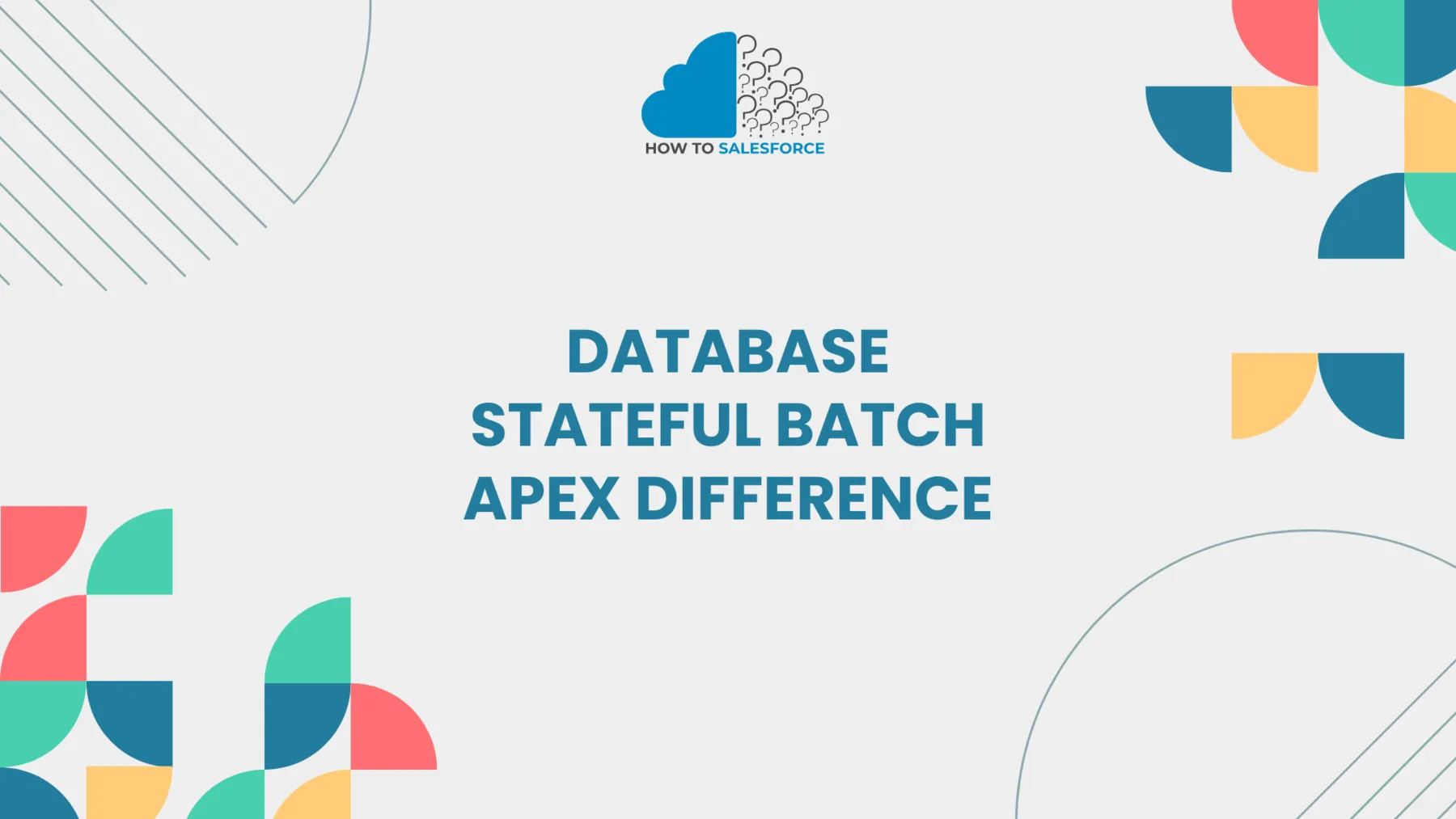What is Database Stateful Apex
The ability to maintain instance variable values across transactions is the Database Stateful Batch Apex Difference. During batch execution, this functionality makes data tracking and aggregation possible. It is inappropriate for situations needing continuity or intermediate results because, without it, variables reset.
Wanna read more? Here’s another blog: Salesforce Formula: Determine the Object Type of a WhatId
Key Features of Database Stateful Apex
- State Preservation: Information is persistent between method calls.
- Ideal for smaller datasets: this tool is useful for simpler tasks.
- Global Variables: Variables can hold values for various methods.
- Faster Execution: Effective for smaller, more straightforward data operations.
When you need to recall information while performing a task, Stateful Apex performs admirably. Nevertheless, it has drawbacks when handling big data sets.
What is Batch Apex
To process large datasets, use Batch Apex. For more effective processing, it operates asynchronously and divides the data into smaller pieces. Long-term operations benefit greatly from its unique design, which allows it to manage massive volumes of records. Let’s review the specifics.
Key Features of Batch Apex
- Asynchronous Execution: Utilises resources by operating in the background.
- Effective for Big Datasets: Made to manage millions of records.
- Chunking: Breaks up data into smaller, more manageable pieces.
- Three Methods: For improved control, there are three methods: `start()`, `execute()`, and `finish()`.
Large dataset processing is ideal for Batch Apex. It enables Salesforce to handle enormous volumes of data without experiencing problems with system performance.
Differences Between Database Stateful and Batch Apex
Let’s now examine the main differences between Database Stateful Apex and Batch Apex. You can select the ideal tool for your project by being aware of these variations.
State Management
- Batch Apex: doesn’t protect the state. Each batch is handled separately.
- Database Stateful Apex: It preserves data between transactions. Useful when maintaining context is important.
Data Volume
- Database Stateful Apex: Fits well with moderately sized datasets.
- Batch Apex: is the best option for managing millions of records.
Execution Model
- Database Stateful Apex: Completes a single transaction synchronously.
- Batch Apex: Divides work into manageable chunks and operates asynchronously.
Use Cases
- Database Stateful Apex: Excellent in situations where state retention is necessary. Multi-step procedures or the updating of related records are two examples.
- Batch Apex: Great for processing in large quantities. Scheduled jobs, data migrations, and extensive updates are a few examples.
Performance and Efficiency
- Database Stateful Apex: Quick for easier jobs. Large datasets may cause it to rapidly reach its limits.
- Batch Apex: Slower but effective in high quantities. To stay within the governor’s bounds, it breaks up the work into fragments.
When to Use Database Stateful Apex
The better option is Database Stateful Apex when:
– You must monitor the status of various operations.
– The datasets you work with are small.
– Data management across several transactions is required.
Example Use Case for Database Stateful Apex
Consider that you are updating an account’s and its associated contacts’ records. It may be necessary to verify the account’s status and use different reasoning accordingly. You can make decisions based on past updates and maintain the state throughout the execution process with Database Stateful Apex.
When to Use Batch Apex
Batch Apex is best when:
– You must handle sizable datasets.
– You wish to carry out tasks in an asynchronous manner.
– You have long-term tasks to manage.
Example Use Case for Batch Apex
Assume that the Account object needs 100,000 records updated. You can break up these updates into manageable portions by using Batch Apex. To prevent problems with governor limits or performance lags, each chunk will operate independently.
Database Stateful vs. Batch Apex: Salesforce Governor Limits
Note that Salesforce’s governor limits apply to both Database Stateful and Batch Apex. These restrictions make sure that your code doesn’t impair Salesforce’s functionality as a whole. These two tools, however, approach these limitations differently.
- Database Stateful Apex: When processing large datasets, it is prone to rapidly reaching governor limits due to its synchronous operation. You have to keep an eye on the quantity of records processed and the resources used for every transaction.
- Batch Apex: The purpose of Batch Apex is to circumvent governor limits. Salesforce is more effective for large data operations because each batch of records operates independently and resets the governor limits for each batch.
Managing Performance with Batch Apex
Batch Apex helps manage performance by breaking up large tasks into smaller ones. This chunking technique avoids system overload when working with millions of records. You can set the batch size for each operation in Salesforce. You can prevent too much processing time by managing this.
- Batch Size Example: To avoid reaching resource limits, divide a task involving a list of one million records into batches of 2,000 records each.
Key Takeaways
Both tools have crucial functions in Salesforce. The task at hand will determine which one is best.
The benefits of using Database Stateful Apex include:
– Minimal datasets.
– Data persistence across various methods is necessary for certain operations.
– Processes are simpler.
It is better to use Batch Apex for:
– Big datasets.
– Asynchronous processing.
– Bulk updates and ongoing tasks.
Conclusion
To sum up, you can select the ideal tool for your needs by being aware of the distinctions between Database Stateful Apex and Batch Apex. For smaller tasks where the state is crucial, Database Stateful Apex is excellent. Nonetheless, Batch Apex is excellent at asynchronously processing massive amounts of data. You can choose the best approach for your task by taking into account its size and complexity.


